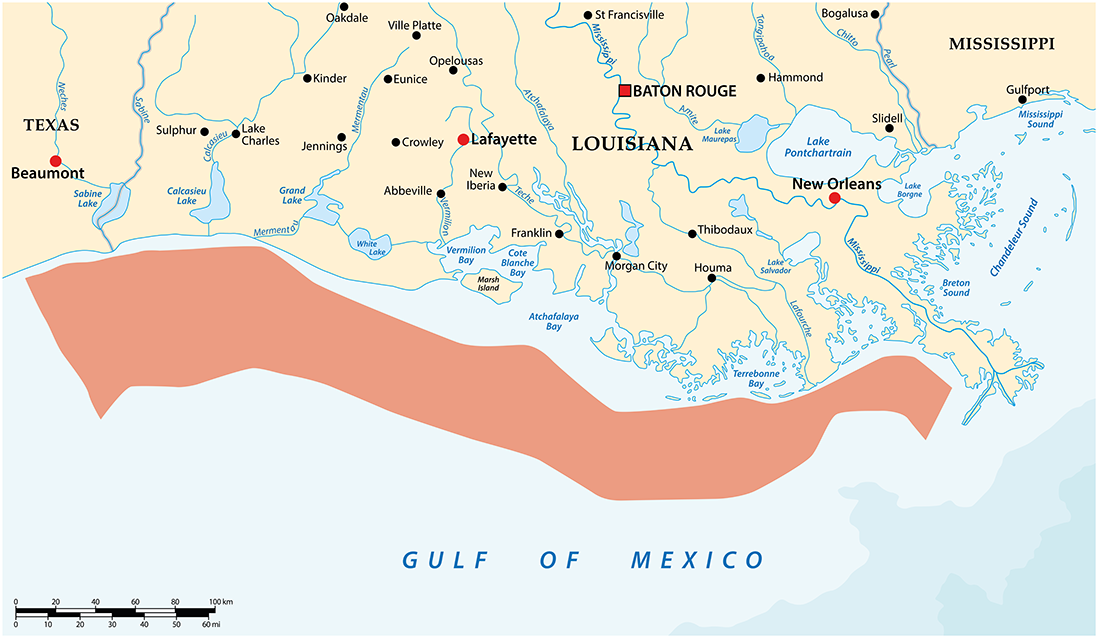Illinois Nutrient Loss Reduction Strategy facilitates preservation of community waterways
When nutrient-rich runoff, which is water containing high levels of nutrients like nitrogen and phosphorus from fertilizers, manure and sewage enters waterways, it causes excessive algae blooms. This leads to a process called eutrophication. Eutrophication blocks the light that seagrass and other underwater plants need to survive – and that's just the beginning. Starved of light, the algae and underwater plants gradually die and decay, depleting the oxygen in the water, disrupting the entire aquatic ecosystem and endangering aquatic life.
Nutrient runoff in Illinois waterways contributes to eutrophication and eventually makes its way into the Mississippi River. The Mississippi River carries nutrient-laden freshwater to the Gulf of Mexico, elevating levels of nitrate, nitrite, ammonium, and orthophosphate and lowering oxygen levels. This creates dead zones – areas where low oxygen alters fish diets, growth rates and habitat use and reduces the availability of commercially-harvested species, such as shrimp.
Between our sprawling farmland and major metropolitan areas, nutrients from fertilizer, manure and sewage treatment plants leach into waterways, a reality that has Illinois ranked as one of the Gulf's top contributors of dead zones. To address these challenges, Illinois developed a nutrient loss reduction strategy in 2015 to improve water quality at home and downstream.
This blog post unpacks the Illinois nutrient loss reduction strategy and highlights how working with experts at Fehr Graham can help develop and implement such a strategy to safeguard waterways in your area.
What is the Illinois nutrient loss reduction strategy?
The Illinois nutrient loss reduction strategy is a statewide effort to limit the amount of nutrients, particularly nitrogen and phosphorus, entering Illinois waterways. The strategy aims toward:
- 45% reduction in total phosphorus and total nitrogen loads originating in Illinois.
- 15% decrease in nitrate-nitrogen and a 25% decrease in total phosphorus by 2025.
The strategy is managed by several entities: the Illinois Environmental Protection Agency (EPA), Illinois Department of Agriculture (IDOA), University of Illinois Extension and a multistakeholder policy working group.
The science-based approach emphasizes on:
- Expanding programs to optimize nutrient loss reduction
- Designing budget-conscious approaches to reduce nutrient pollution.
- Increasing collaboration between stakeholders, including the private sector, nonprofits, academia, wastewater agencies, and state and local governments.
The Illinois nutrient loss reduction strategy does not call for new regulations. Still, it does outline approaches to meet industry regulations and community needs while reducing the negative impacts of nutrient loss on the environment and public health.
|
Establishes a Nutrient Monitoring Council.
|
|
Improves collaboration among the government, nonprofits and industries.
|
The 2023 Biennial Report is the fourth update to the strategy since its inception and highlights its implementation and successful outcomes across the nonpoint source, point source and urban stormwater sectors.
|
Point sources
|
Source: Press Release by IDOA
Each sector's ongoing nutrient loss reduction require greater community efforts to achieve the strategy's water quality and nutrient reduction goals. Partnering with an expert can help communities determine the best methods to reduce nutrient loss across the sectors.
Fehr Graham can help implement a nutrient loss reduction strategy
At Fehr Graham, we are committed to improving the public health and environment across Illinois. Our expertise in wastewater engineering, watershed planning and stormwater management helps communities strategize and implement ways to reduce nutrient loss and improve water quality. We can help develop and implement a nutrient loss reduction strategy for your community by:
- Providing guidance on Nutrient Assessment Reduction Programs (NARPs) implementation to optimize nutrient reduction measures.
- Identifying cost-effective solutions for nutrient reduction.
- Helping secure funding for strategy implementation and stakeholder engagement.
Our experience and expertise in nutrient management and water quality solutions allow us to support your community in developing and executing comprehensive nutrient loss reduction strategies – from inception initial planning to implementation.
To learn about Illinois Nutrient Loss Reduction Strategy and how Fehr Graham can help you develop effective ways to reduce nutrient loss from point and nonpoint sources in your community, contact us or call 630.897.4651.
 |
Karoline's creditials PhD, PE, PMP, CFM, is a powerhouse in water resources engineering. She specializes in watershed, water quality, hydrodynamic modeling, regulatory permits, nutrient criteria development, watershed planning and stormwater management. Her groundbreaking research, particularly at the interface of environmental engineering and ecology, has revolutionized our understanding of urban streams. Reach her at This email address is being protected from spambots. You need JavaScript enabled to view it.. |


